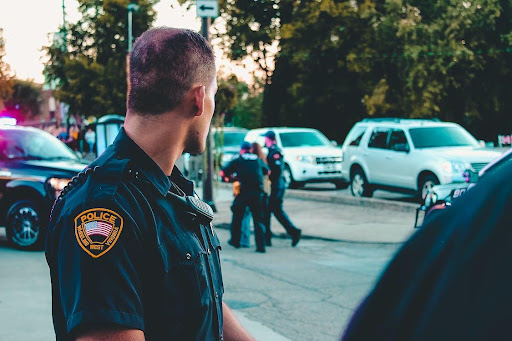David Carrick, a former police officer with the Metropolitan Police Department in the UK, was arrested in October of 2021. In January of 2023, he admitted to forty-nine offenses committed over a period of eighteen years, twenty-four of which were counts of rape. In total, Carrick has admitted to over eighty different instances of sexual misconduct. Unfortunately, David Carrick is not an example of a “bad apple.” Carrick’s case is a disgusting and enraging reminder of the frequency with which those appointed to seek justice for crimes against survivors are actually the perpetrators of such crimes. The coercive capacity afforded to police officers is often abused, allowing officers to use their position to force vulnerable populations into trading sexual favors for their freedom. Survivors of sexual violence cannot reasonably be expected to entrust law enforcement officials with their cases when those same officials are quite often perpetrators of sexual violence.
Unfortunately, David Carrick’s case is not unique in any regard: not to him, or to the Metropolitan Police Department, or to the United Kingdom. The number of sexual crimes committed by members of police forces is truly staggering. In a Vice News article from 2021, a 2014 study done by Professor Phillip Stinson from Bowling Green University is mentioned, stating that the study uncovered 118 cases of rape perpetrated by members of the police in forty-three US states and Washington, DC. A 2020 study from Stinson and his team found 699 instances of sexual violence involving the police from 2005 to 2012. Even more striking is the age of the victims of these crimes: “the study found that nearly three-quarters of all the cases involved victims who were younger than 18.”1 Stinson believes that these officers may be taking advantage of the public’s trust in the police, as parents and other caregivers are likely to drop their guard when in the presence of law enforcement. Children are also taught to be trusting of law enforcement officials from a young age, leaving them more vulnerable to attacks from police officers. This qualitative analysis is important to consider given the quantitative analysis Stinson and his team conducted, which finds that most sex crimes perpetrated by members of the police force against minors occurred when the officer was off duty, with the victims of these crimes most often being only fourteen or fifteen years of age.2 These statistics indicate a lackluster vetting process utilized by law enforcement agencies when hiring police officers and a generally toxic culture within police departments.
It is important to understand when police officers are committing these offenses to gain a proper understanding of the issue at hand. Stinson’s study found that eighty percent of these crimes occurred while the officer who perpetrated the crime was on duty.3 The nature of the profession of policing provides great opportunity for officers to take advantage of the citizens they are supposed to protect. Police officers are individuals ordained to use force, largely free of direct supervision, who frequently interact with vulnerable populations and are given the benefit of the doubt by the general public. They have the ability to create isolation through the use of coercive force and legal direction, allowing them to orchestrate situations in which sexual crimes can be committed discreetly. Moreover, they are members of the entity to which society tells survivors to report their crimes. The fear of retaliation, combined with the blue wall of silence, is often enough to convince survivors that it is not worth reporting the misconduct. This can be especially true in rural areas, as police officers are members of much smaller forces and thus have more sway in the department. Evidence from Stinson’s report supports this claim; following a sex crime, the strongest predictor of the offending officer’s conviction was the number of full-time sworn officers employed by the arrested officer’s law enforcement agency.4 The blue wall of silence can be much stronger in rural areas. The badge allows officers the opportunity to take advantage of their victims and protects them from the repercussions of their actions.
Ultimately, though it may not always seem to be the case, police officers are civil servants, beholden to the will of those they enlisted to serve. It is therefore the duty of the public to demand accountability from our police forces, to demand that they are honest with the public, and to demand that they hold their fellow officers to the same—if not greater—standards of compliance with the law and general human decency. We can do this through legislation; bills that make sexual relations between an officer and those in their custody illegal are a good first step. Larger-scale police reform, such as ending qualified immunity or creating unarmed units to respond to instances in which a life is not in immediate danger, would also prove beneficial in this context. The failure of the police to meet these demands thus far has resulted in the erosion of public trust in the institution of policing, especially among survivors of sexual violence who have routinely been ignored, belittled, or even victimized by the institution that is supposed to seek justice for the criminal acts to which they have been subjected.
1 Cops Sexually Assault Women Way More Often Than Most People Think (vice.com)
2 Police sexual misconduct: A national scale study of arrested officers (bwjp.org)
3 Cops Sexually Assault Women Way More Often Than Most People Think (vice.com)
4 Police sexual misconduct: A national scale study of arrested officers (bwjp.org)
